Affiliate links on Android Authority may earn us a commission. Learn more.
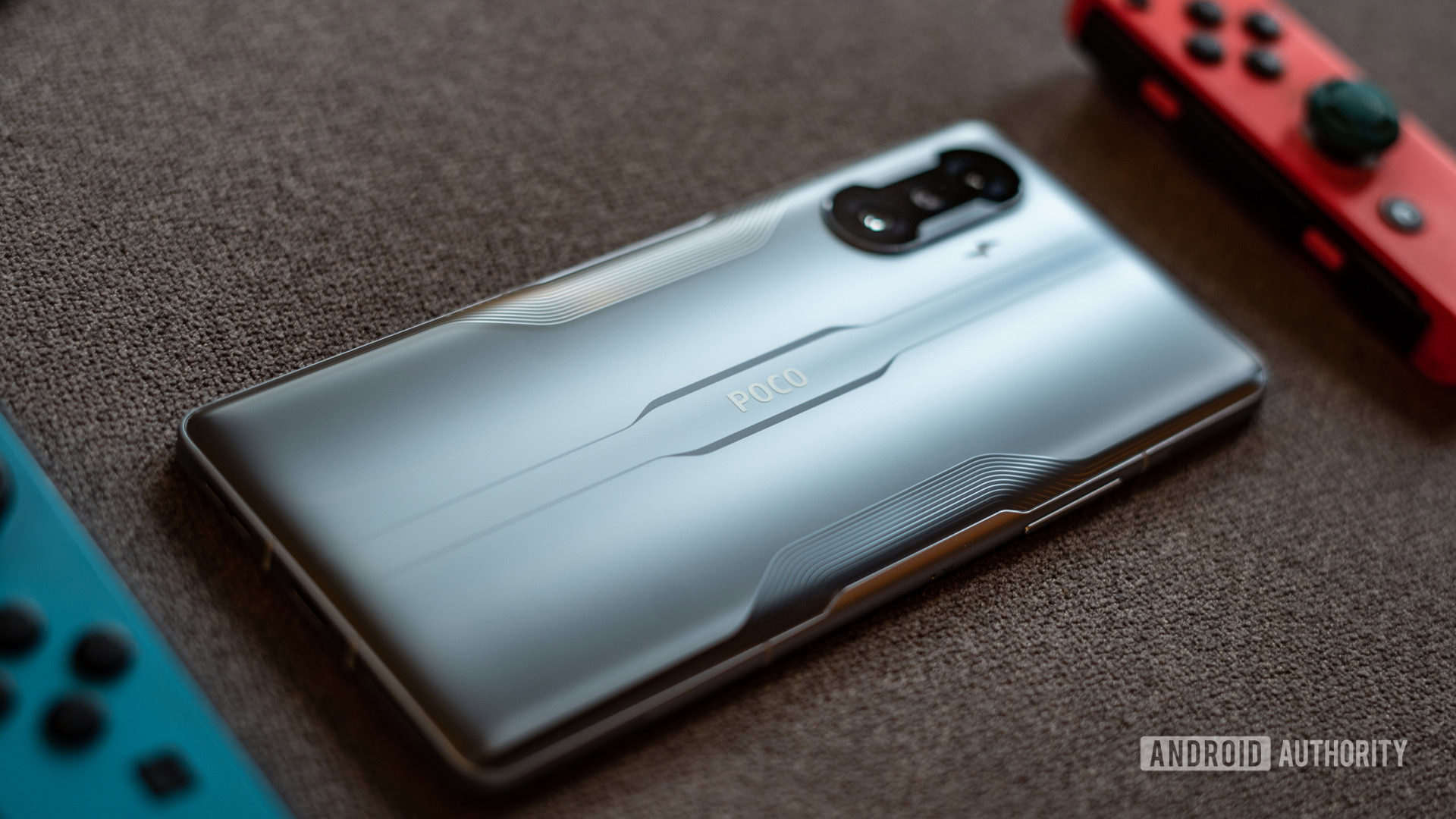


Poco F3 GT
MSRP:
What we like
What we don't like
Our scores

Poco F3 GT
Gaming smartphones all offer plenty of power, but the very best cut above the competition with useful extras like additional controls and aesthetic enhancements like RGB lights. The most successful gaming phones have also traditionally carried fairly high price tags to match their ambitions. The POCO F3 GT flips the script by shifting the spotlight to the mid-range segment all while adding a bevy of hardware features bound to please gamers.
In the Android Authority POCO F3 GT review, we see if the phone can transpose the high-end gaming phone experience to a not-so-high-end device.
What you need to know about the POCO F3 GT
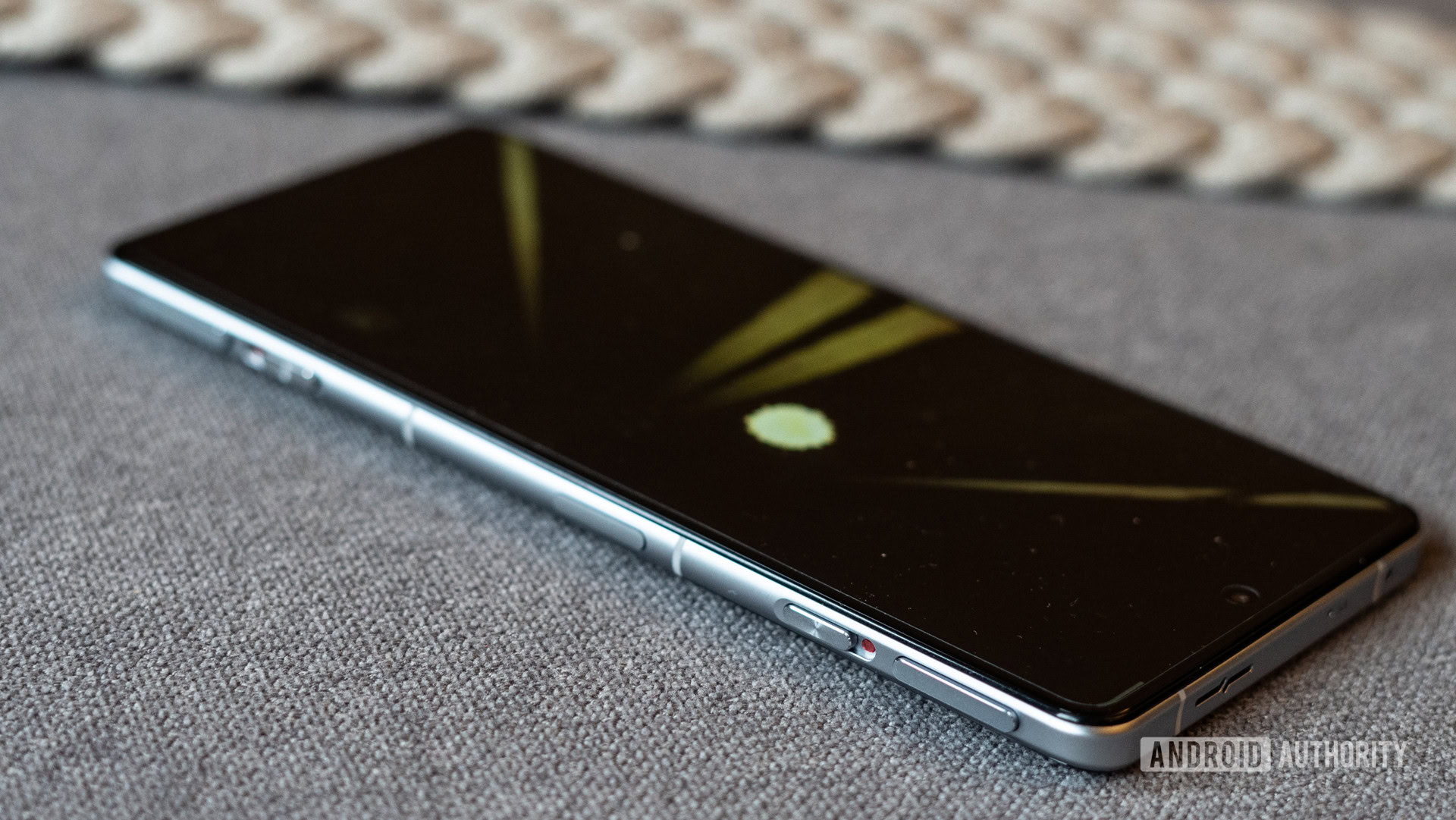
- POCO F3 GT (6GB/128GB): Rs. 26,999 (~$362)
- POCO F3 GT (8GB/128GB): Rs. 28,999 (~$390)
- POCO F3 GT (8GB/256GB): Rs. 30,999 (~$415)
The POCO F3 GT is a flat-out gaming-focused smartphone. This extends from the design choices to hardware additions like gaming triggers, as well as a clear target of balancing performance with value. The phone is a reheated version of the Redmi K40 Gaming Edition sold exclusively in China and goes up against competitors like the OnePlus Nord 2 and realme X7 Pro.
Read more: The best smartphones in India under 40,000 rupees
The POCO F3 GT is the latest to join the rather crowded list of MediaTek Dimensity 1200-packing smartphones. The Taiwanese company’s powerful chipset has proven to be a capable solution for smartphones looking to balance power with value. Running off four Cortex-A55 cores clocked at 2GHz, balanced with three Cortex-A78 cores at 2.6GHz, and finally, a supercharged Cortex-A78 core clocked at 3GHz, there’s ample power here for even the most demanding uses. The POCO F3 GT definitely has the credentials to live up to its high-end gaming aspirations.
POCO is fielding the F3 GT in two different color variants: Predator Black and Gunmetal Silver. We’ve got the Gunmetal version in for review. The company hasn’t announced any plans to sell the phone outside India, where it is being sold via Flipkart, starting at Rs. 26,999 (~$262) for the base variant with 6GB RAM and 128GB of storage.
How’s the design of the POCO F3 GT?
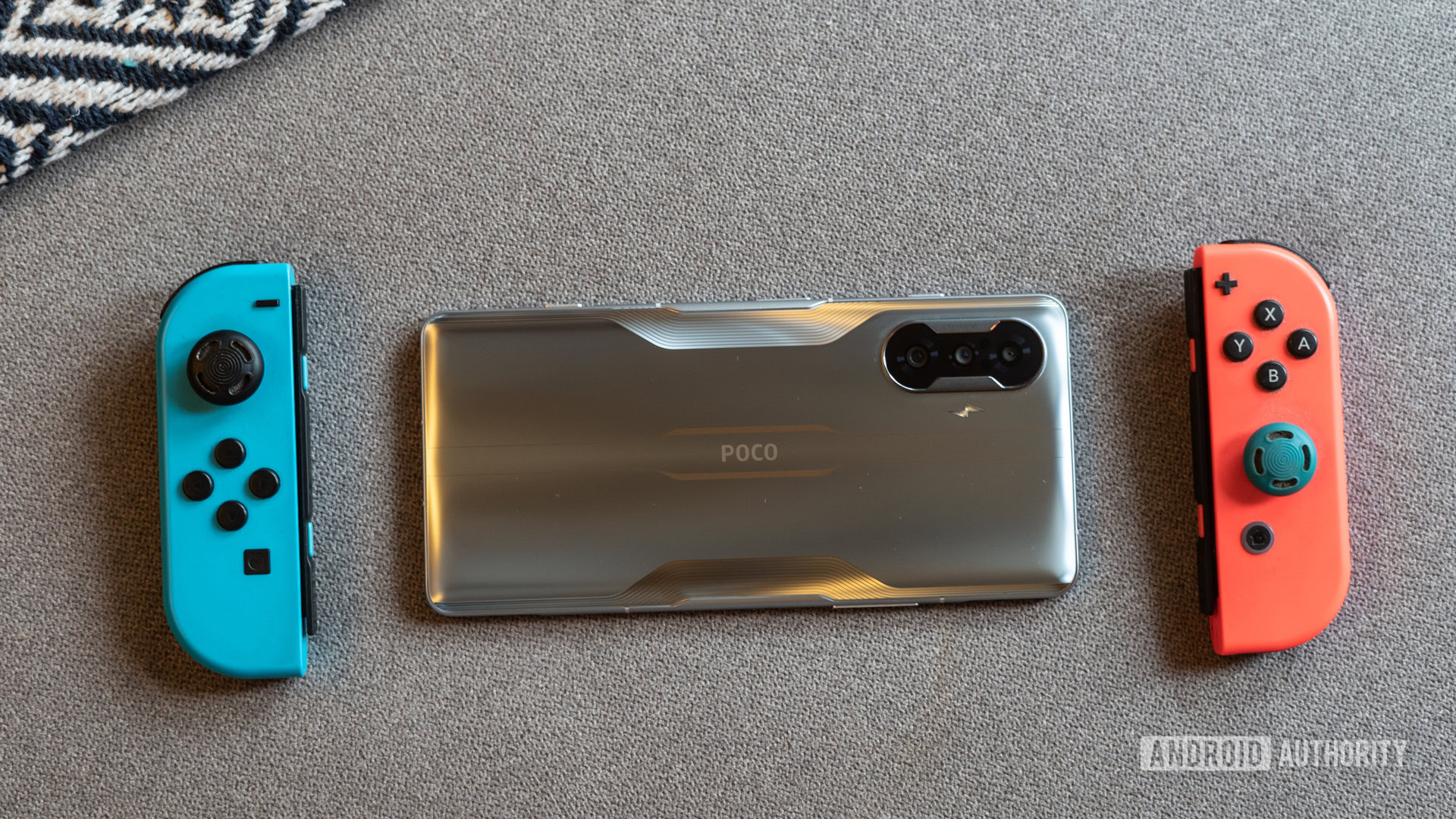
Design is always subjective, but the POCO F3 GT is as polarising as they come. Gamers will likely appreciate the aggressive design, but if you, like me, prefer something a bit more minimalistic, this ain’t it. That said, you can’t really fault POCO for playing into the entire gamer aesthetic for a device that is labeled as a gaming smartphone.
The POCO F3 GT is a standard glass-metal sandwich with some added gamer glitz.
The entire phone is a standard Gorilla Glass 5 and metal sandwich design with some added glitz to emphasize speed. You’ll find design embellishments all over the back panel as well as an LED flash in the shape of a lightning bolt. It’s all a bit superfluous but plays into the aesthetic. The camera module has LED rings flanking it on the side that can be set to glow while gaming. The phone allows deep control over the LEDs and you can adjust the color to your liking in addition to changing the speed at which the LEDs will pulse. These can also sync up with notifications, making them useful and not just there for show.
The right side of the POCO F3 GT is busy. Mechanical trigger buttons flank the top and bottom while a side-mounted fingerprint reader sits bang in the middle. The fingerprint scanner is as fast as they come, and I didn’t face any reliability issues in my week with the phone.

To improve everyday usability, POCO has tossed in slider switches on either side of the power button that can push the triggers flush with the midframe. It all sounds a bit much, but the ergonomics are on point, and, slightly heavy 205g weight aside, the phone feels comfortable in the hand. Meanwhile, the volume rocker sits within easy reach over on the left.
The POCO F3 GT is a bit heavy at 205g, but the weight is well-balanced, making the phone comfortable for hours of gaming.
Other additions include an IR blaster at the top and an IP53 rating for splash resistance, as well as stereo speakers. I came away rather impressed with the sheer volume and quality of the audio from the speakers. The unbalanced output can throw you off a bit, but the speakers will serve in a pinch if you want to blast out music.
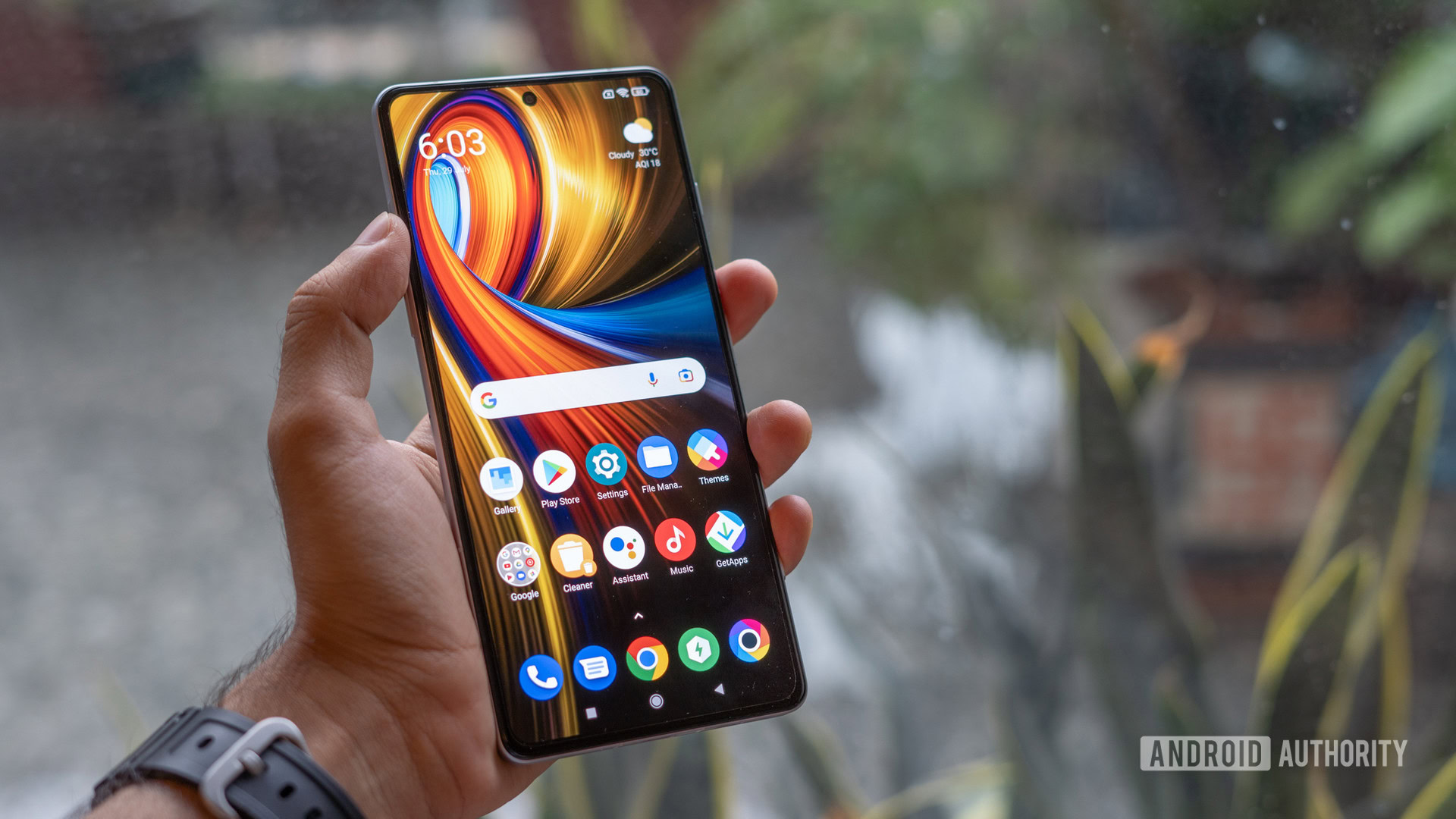
POCO phones in India have so far stuck to LCD panels so the switch over to a high refresh rate AMOLED panel comes as a more than welcome addition. In fact, the phone one-ups the OnePlus Nord 2, with a 6.67-inch 120Hz panel. When set to 120Hz the panel dynamically adjusts the refresh rate to match on-screen content.
The hardware is great and looks fantastic once set up properly. Unfortunately, POCO has made some odd choices with the default settings. To start with, the pre-selected vivid mode is incredibly oversaturated. Switching to the standard picture profile makes a world of difference.
The iffy ambient light sensor alters brightness levels sporadically while gaming.
The phone also ships with the display set to 60Hz out of the box. I get wanting to maximize battery life, but an option to choose between optimizing for battery longevity or a better user experience — this is a gaming phone after all — during the onboarding process would make things a whole lot easier. And then there’s the ambient light sensor. The phone has a tendency to intermittently reduce brightness levels. You’d be better off setting your preferred value manually.
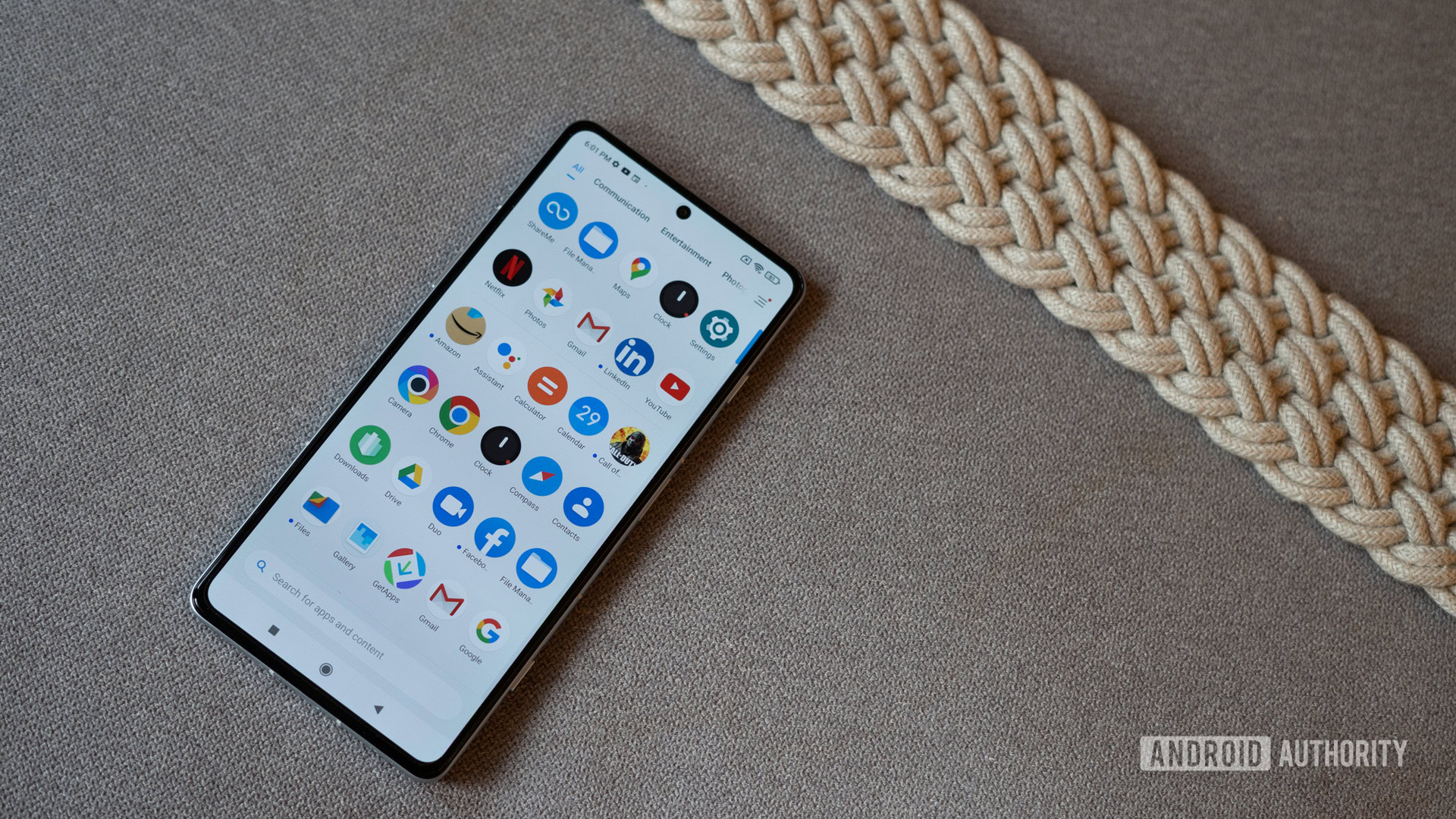
It is hard to pick out a flaw in the POCO F3 GT from a design standpoint. Its got all the bells and whistles you could need and backs it up with generally excellent build quality. Gorilla Glass 5 and an aluminum midframe give the phone a premium feel and the phone manages to maximize screen real estate with minimal bezels and a central punch-hole front camera. It’s not a small phone, but the size works for the intended demographic, and the top-tier gaming triggers (more on those later) go a long way towards setting the hardware apart from the competition.
Is the POCO F3 GT good for gaming?
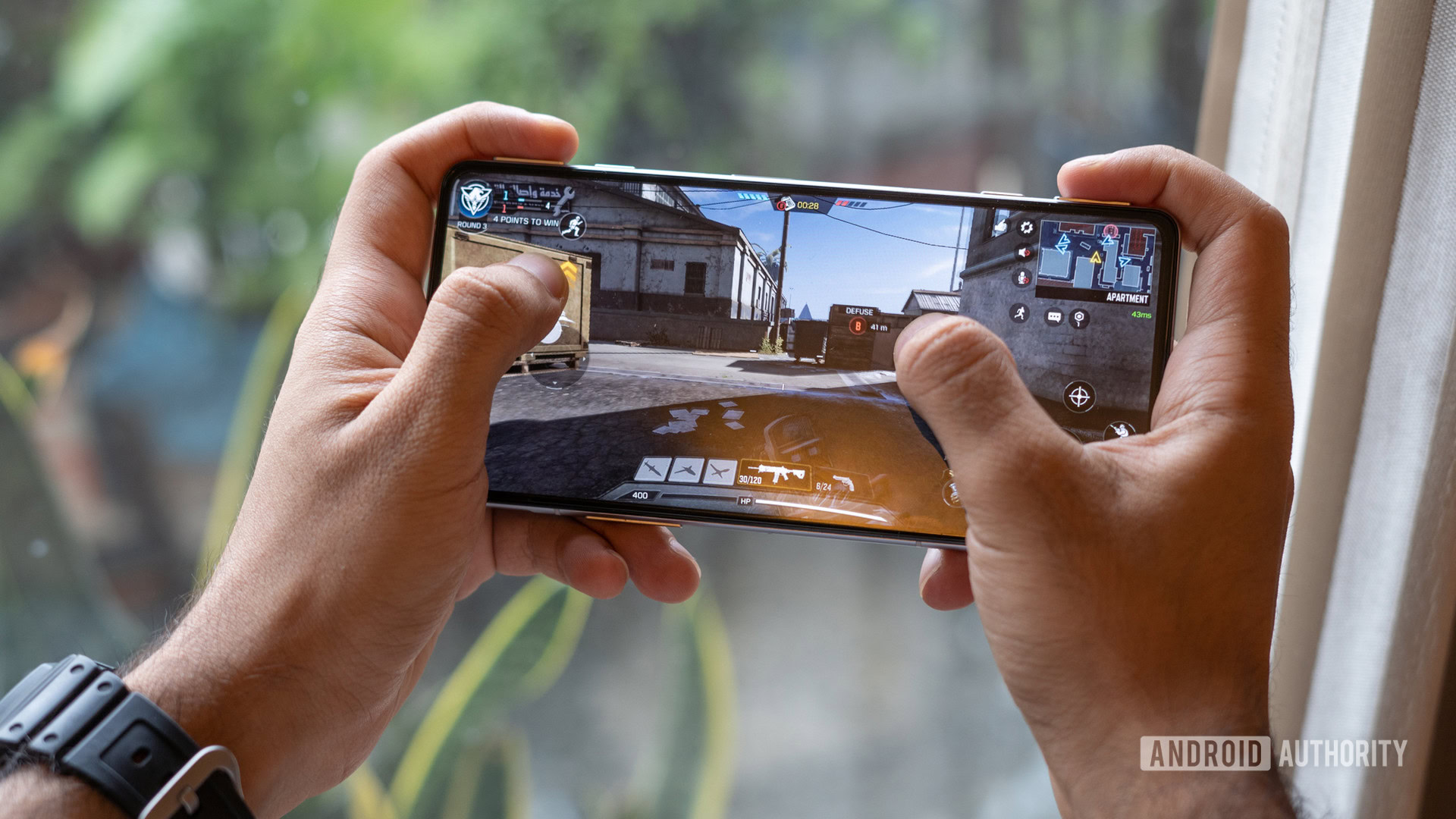
As you’d imagine, with the MediaTek 1200 in tow, day-to-day performance poses no concerns for the POCO F3 GT. Apps are slick and smooth, with fluid transitions all around. But this being a gaming phone, we need to push it a little harder.
I put it through the wringer with multiple rounds of Call of Duty: Mobile and Real Flight Simulator, my preferred mobile games. The chipset runs warm to the touch, but unlike the OnePlus Nord 2, I never found it uncomfortably hot. It is clear that POCO has effectively tweaked the thermals to keep the chip suitably cool and this shows over multiple rounds of gaming.
The maglev gaming triggers included on the POCO F3 GT are a legitimately useful addition too. I’m not the most prolific smartphone gamer but even I observed a significant improvement in my performance. The buttons are sufficiently tactile and are a significant step above capacitive controls you find on most gaming phones. Mapping the controllers is as easy as dragging two touchpoints to the appropriate touchscreen controls. The slider mechanism to stow away the buttons is also nifty and, once locked, the triggers sit flush with the midframe.
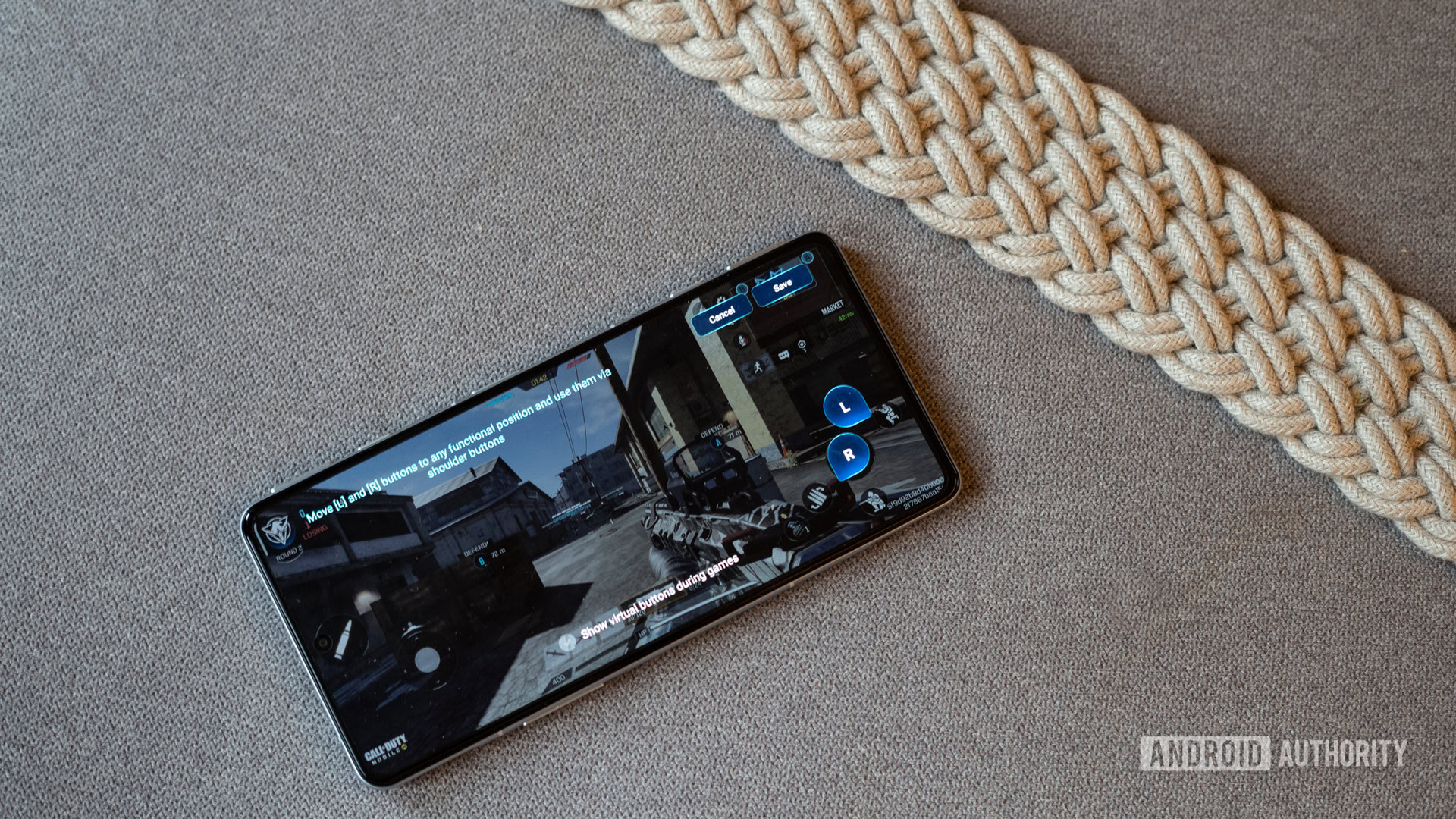
On the software side, a built-in game turbo mode serves as a one-stop destination for all your games. It is possible to mute all notifications, tweak network bandwidth and touch latency, and clear out the RAM at launch. Additionally, POCO has added optional enhancements for selected games like Call of Duty. These include visual tweaks to enhance visibility through filters.
The gaming triggers offer excellent tactile feedback and drastically elevate the gaming experience.
Battery life and, more importantly, battery drain is very well managed too. The 5,065mAh battery routinely lasted me a full day of use with several rounds of gaming included and the display set to 120Hz. With less aggressive use, two days of battery life wouldn’t be out of the question. Even more impressive was the battery drain, or lack of it, while gaming. Where the OnePlus Nord 2 gulped through percentage points, an average round of Call of Duty: Mobile saw the battery drop no more than two to three percentage points.
Are the cameras any good?
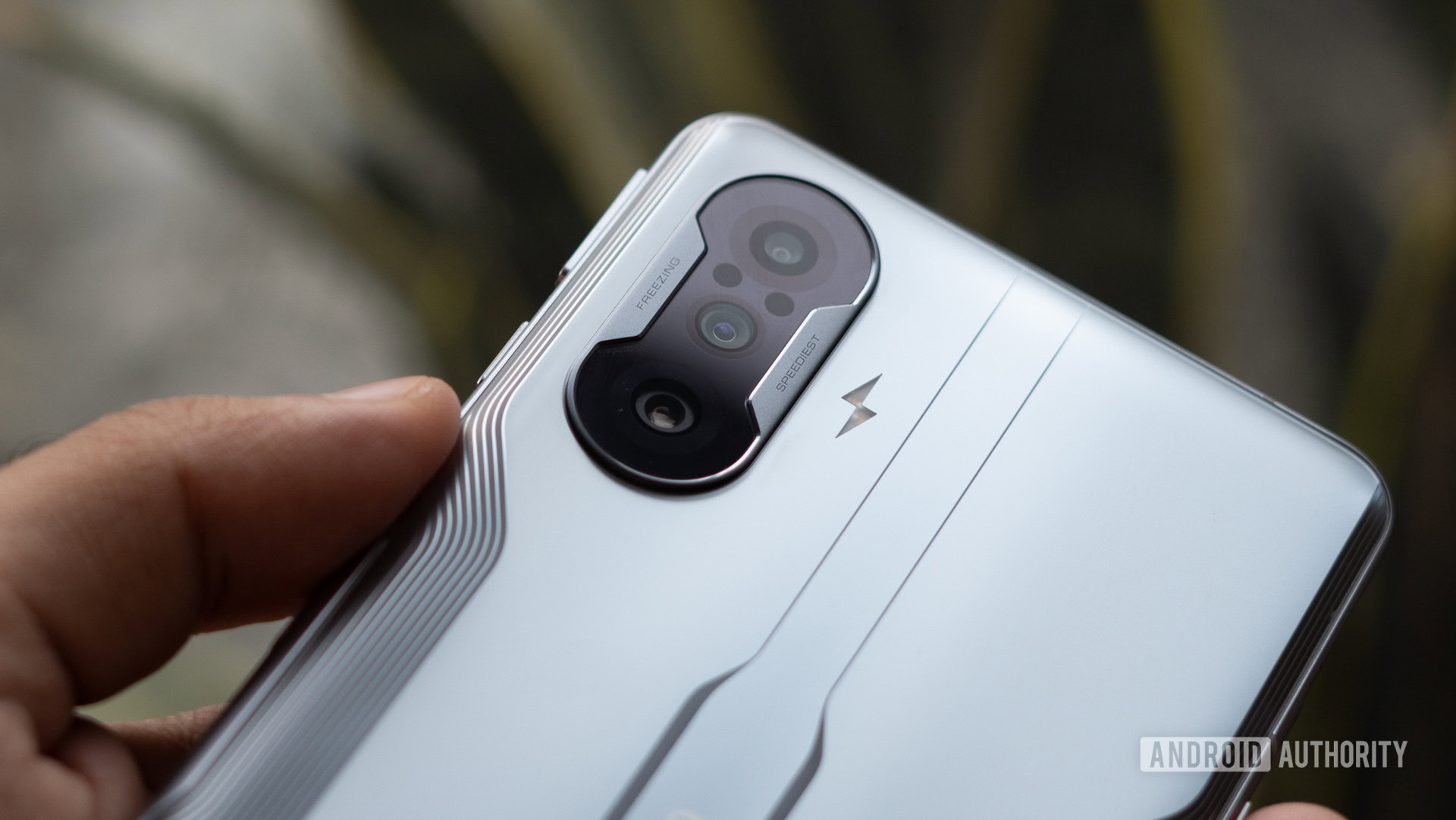
You’ll find a trifecta of cameras on the back of the POCO F3 GT. This includes a 64MP primary lens, an 8MP ultra-wide sensor, and a 2MP macro lens. Incessant rain meant that I was rather limited with shooting conditions during my time with the phone, but samples from the POCO F3 GT make it clear that imaging was an afterthought.
You will notice a heavy dose of oversharpening in nearly every shot from the phone. This makes the image pop on the screen, but zooming in closer reveals significant artifacts around the edges of objects. This extends to noise reduction as well, where low-level details are completely lost.
The camera can also struggle with white balance, with a skew towards amplifying warmer tones. For example, in the first image, the lighting wasn’t nearly as warm as the camera adjusted for.
Limited to 8MP, the ultra-wide camera doesn’t resolve a whole lot of detail if you like to zoom in to images. Additionally, there is noticeable lens distortion the further you move away from the center of the shot. The ultra-wide camera will suffice in a pinch but it doesn’t offer much, if any, improvement over the competition.
Low light images from the POCO F3 GT are not very good at all. This extends to the dedicated night mode where the camera is unable to capture a sharp image unless you have rock-steady hands. Regardless of the mode, you will observe significant digital noise in low-light shots. The night mode shot, while brighter, isn’t particularly better than the standard low light shot.

The 2MP macro camera is little more than a tick-off on the spec sheet. While you can technically capture close-ups with ease, the low resolution, poor color science, and oversharpening make the results less than stellar. Honestly, you will get better results shooting in the 64MP mode from the primary camera and cropping in.

Elsewhere, I came away pleased with the portrait mode on the POCO F3 GT. The software does an excellent job at defining edges and will even let you simulate various aperture values going from f/1 all the way to f/11.
The front-facing camera on the POCO F3 GT shares the same traits as the rear-facing camera. Additionally, HDR performance is rather lackluster, as you’ll notice from the burnt-out highlights. It appears that the camera bumps up exposure levels to brighten the image while cranking up the sharpening levels. It’s just not a very good look. Portrait mode detection isn’t too bad even though my hair tripped the algorithm a few times.
Video capture is on par with competing phones. The lack of a 4K at 60fps option is, however, a big miss. Captured footage tends to have a hint of oversaturation and extra sharpening, just like the images. It looks good in decent lighting, but the quality nosedives once things start getting a bit dimmer.
You can take a look at our POCO F3 GT full resolution camera samples in this Google Drive folder.
What is the software like?
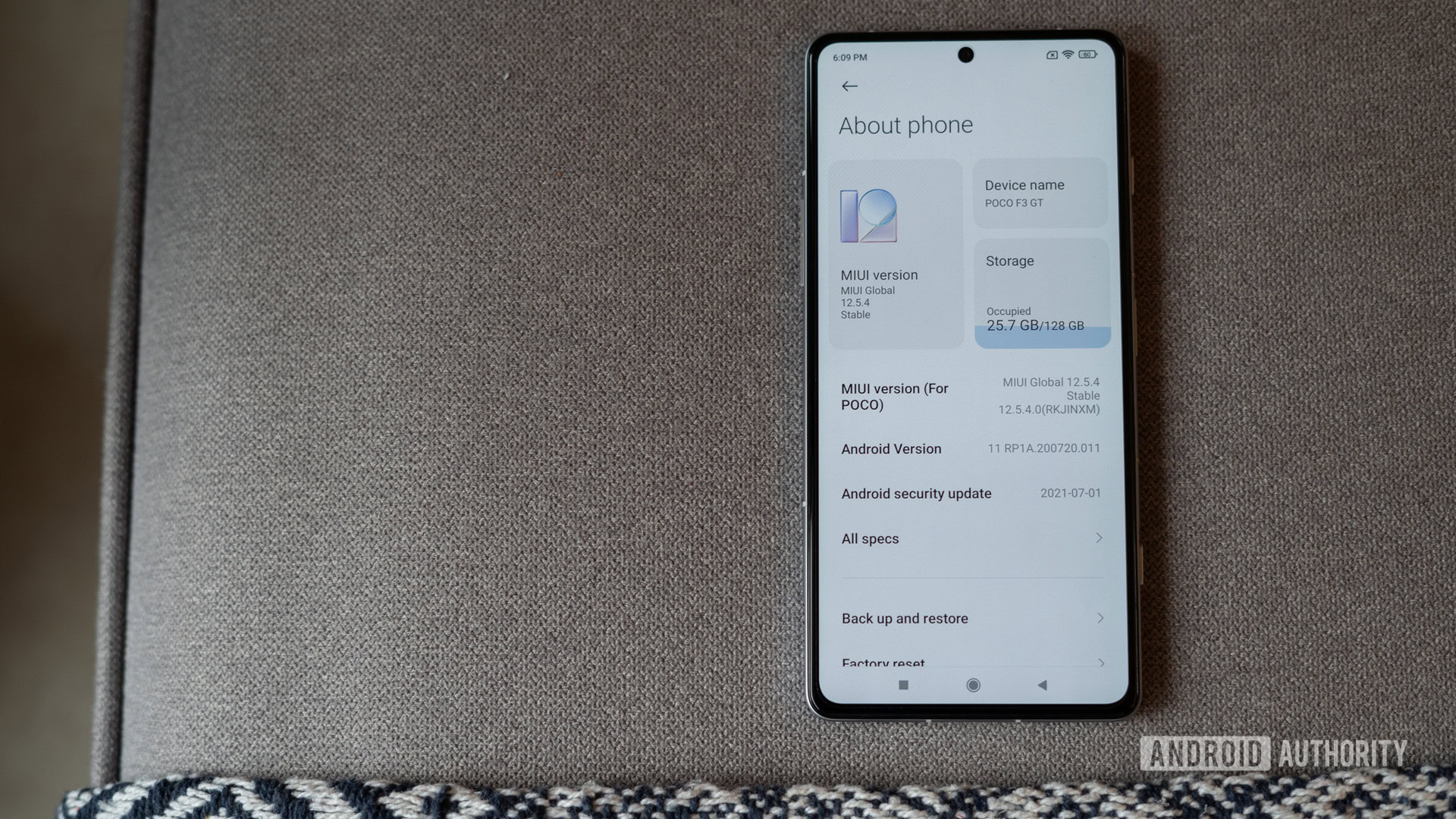
POCO phones, like Mi and Redmi phones, run on MIUI 12.5, albeit with a difference. To start with, there are no ads here. MIUI 12.5 on Android 11 is supremely slick, with ample options for customization. This starts from the home screen that can be tweaked to show or hide an app drawer, as well as the customary grid resizing for apps. Dive in and you’ll find much more robust customization on offer including deep control over the lock screen, always-on display, and much more.
The performance here is great and MIUI 12.5 flies on the hardware — and there are no ads either.
The phone ships with the MIUI control center switched on by default, and I’m absolutely not a fan of it. The oversized icons and fonts simply don’t match up with the look and feel of the rest of the phone. It is, however, possible to switch it off.
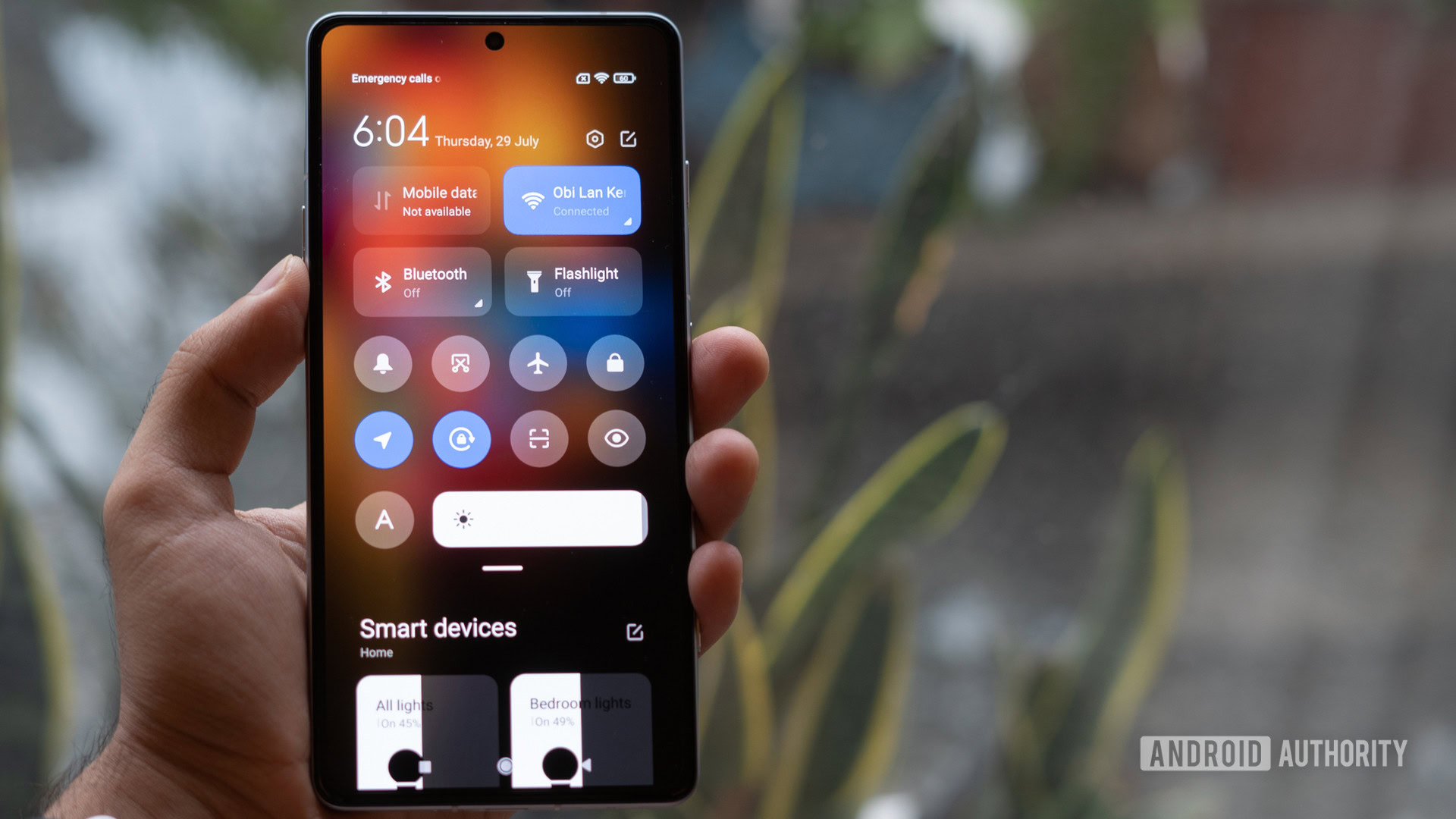
I’m also not a big fan of some of the default choices like the oversaturated colors, but these are easy enough to fix. This, however, isn’t the phone for anyone who prefers a clean take on Android. There’s a litany of pre-loaded apps including Xiaomi’s browser, music, and gallery apps as well as third-party additions like Amazon, Facebook, and more. Thankfully, most of these can be removed.
Anything else?
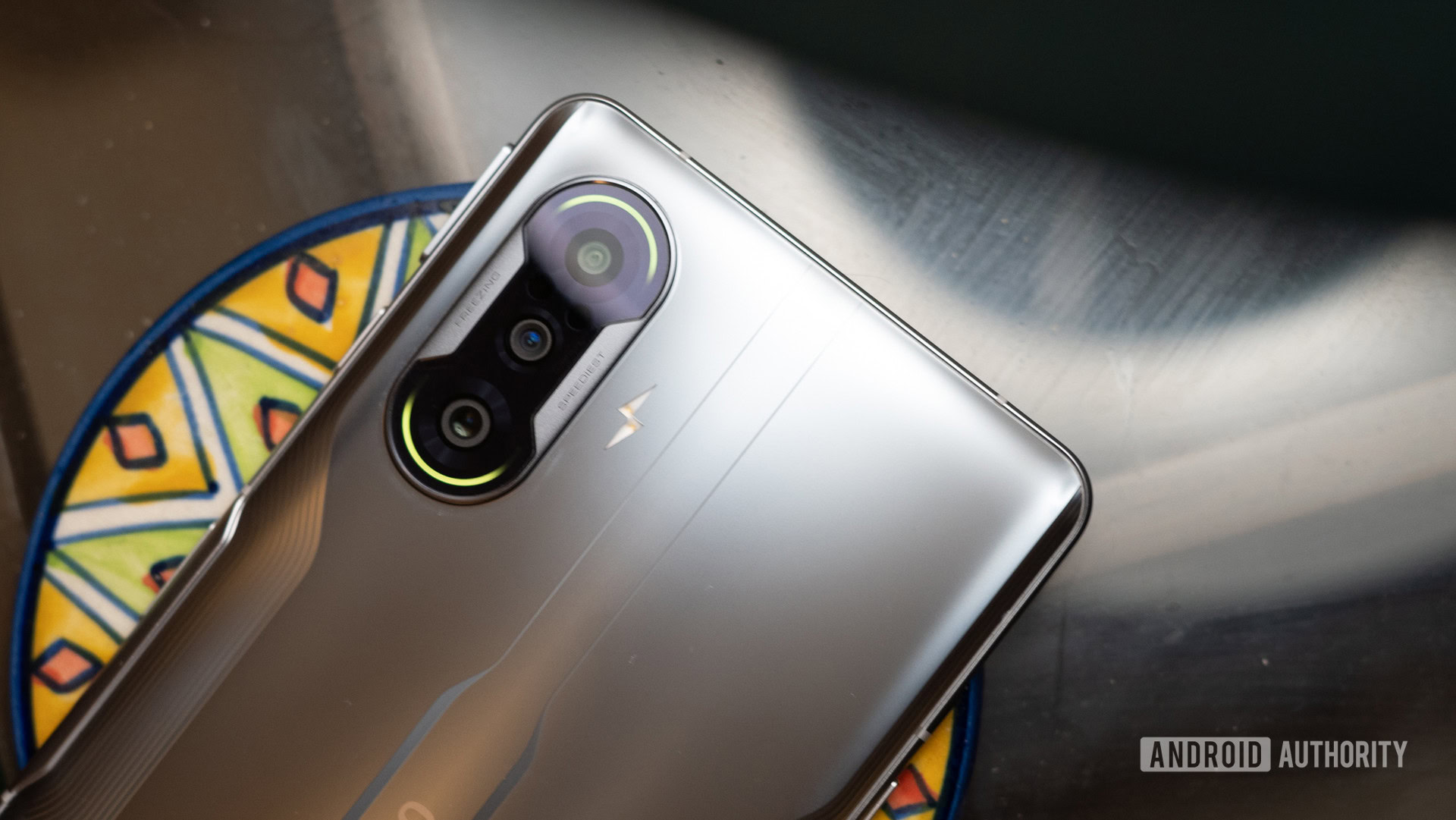
- Charging: Charging the phone using the included 67W charger is suitably speedy and took about 50 minutes to go from zero to 100. The POCO F3 GT does not support wireless charging, but that’s to be expected at this price.
- 5G support: The POCO F3 GT boasts 5G support on the sub-6GHz spectrum. This should make the phone ready to go once network rollouts start in India. Band support is, however, limited to just N77 and N78.
- Software support: POCO India is promising two major updates and two years of security patches. This isn’t quite as good as the three years of patches being offered by the competition, and POCO India needs to do better.
- No headphone jack: The vast majority of gaming phones include a headphone jack on the device, so the lack of one here is a bit surprising. However, POCO is including a USB-C to 3.5mm adaptor in the box which should make it a bit easier for buyers looking to use their favorite headphones while getting their game on.
POCO F3 GT specs
| POCO F3 GT | |
|---|---|
Display | 6.67-inch AMOLED FHD+ (2,400 x 1,080) 120Hz refresh rate 360Hz touch sampling rate HDR10+ Gorilla Glass 5 |
Processor | MediaTek Dimensity 1200 |
GPU | Mali G-77 MC9 |
RAM | Min: 6GB LPDDR5 Max: 8GB LPDDR5 |
Storage | Min: 128GB UFS 3.1 Min: 256GB UFS 3.1 No microSD card support |
Power | 5,065mAh battery 67W fast wired charging In-box 67W charger |
Cameras | Rear: 64MP main, 1.4μm, ƒ/1.65 Auto-focus 8MP ultra-wide 120-degree FoV, ƒ/2.2 2MP macro Auto-focus (3cm - 7cm), ƒ/2.4 Front: 16MP |
Audio | Dual speakers Dolby Atmos No headphone jack |
Connectivity | USB-C Dual-SIM Wi-Fi 6 Bluetooth 5.1 NFC support IR blaster |
Bands | 2G GSM: B2/3/5/8, 3G WCDMA: B1/B2/B5/B8, 4G LTE TDD: B40/B41, 4G LTE FDD: B1/B3/B5/B8, 5G: n77/n78 |
Security | Side-mounted fingerprint sensor Face unlock (insecure) IP53 rating |
Software | Android 11 MIUI 12.5 for POCO |
Dimensions and weight | 161.9 x 76.9 x 8.3mm 205g |
Colors | Predator Black, Gunmetal Silver |
Value and competition
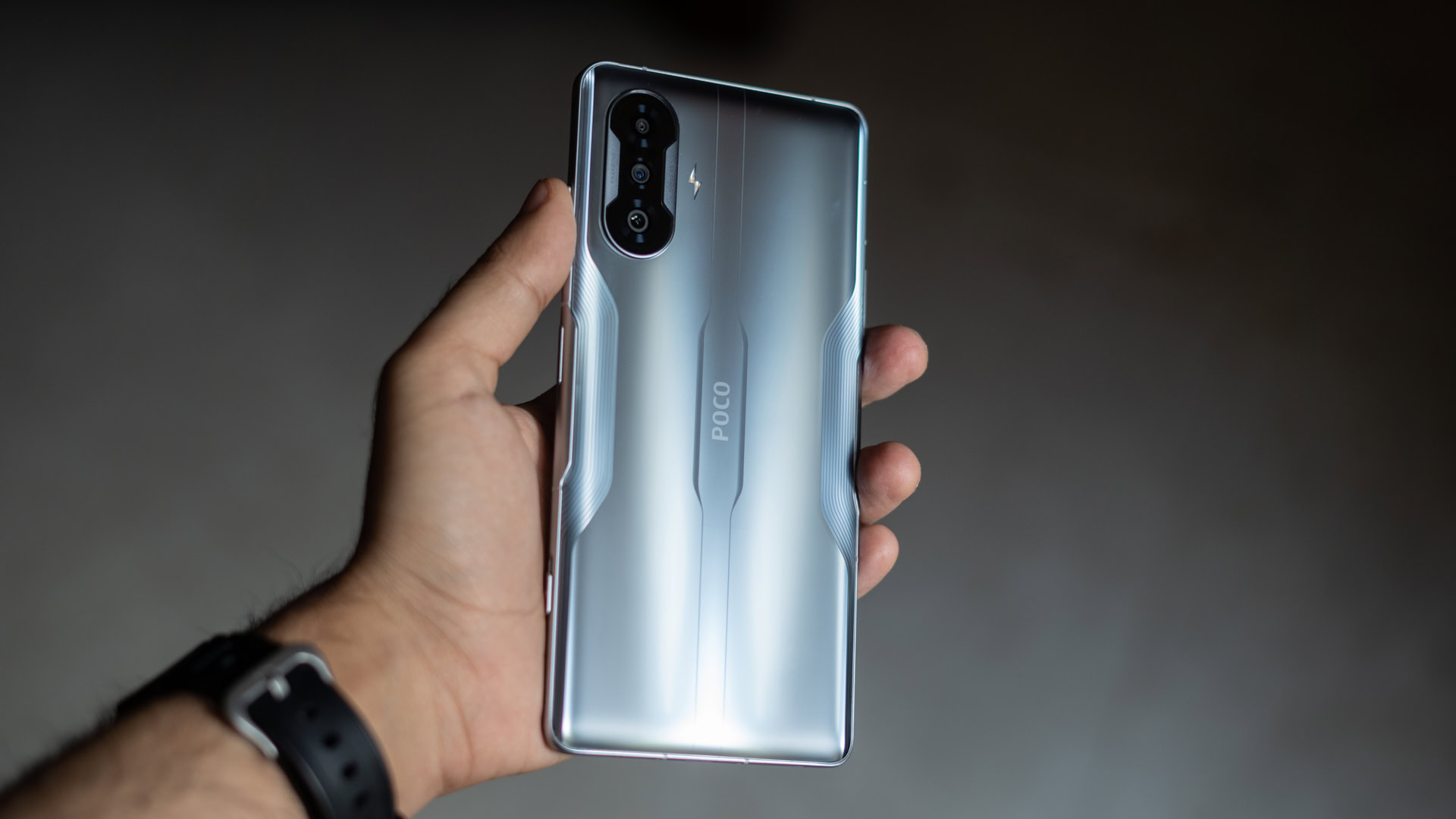
The POCO F3 GT offers exceptional value for a certain kind of buyer. If performance is your primary criteria when buying a phone then the oodles of power offered by the MediaTek Dimensity 1200 and the effective cooling solution make the POCO F3 GT an excellent option for smartphone gamers. However, if you are looking for a more well-rounded smartphone option, there are alternatives to consider.
The most obvious one is the OnePlus Nord 2 (£399/€419/Rs. 29,999). While the spec sheet is remarkably similar, the OnePlus Nord 2 takes a slightly different approach with its cleaner software build, premium design, and noticeably better camera performance.
The realme X7 Pro (Rs. 29,999/~$413) is another excellent alternative. While the phone lags behind a bit with an older processor, the minimalist look coupled with a superlative camera makes up for it.
You could also consider a true-blue gaming phone like the ASUS ROG Phone 5 ($699.99/€799/Rs.49,999), but that will set you back a lot more money. The highlights here include a Snapdragon 888 processor for blistering performance, a gigantic 6000mAh battery to match it up, and a 6.78-inch 144Hz AMOLED display.
POCO F3 GT review: The verdict

The POCO F3 GT is a triumphant return to the formula that made the original POCOphone F1 a hit with its blazing-fast performance and meaningful additions. It’s not a perfect phone by any means, and the lackluster imaging performance is a definite sore point. However, the phone is perfectly suited for its intended audience: gamers.
The POCO F3 GT is a triumphant return to the company's winning formula, and is an easy recommendation for smartphone gamers looking for value.
From the sheer performance offered by the Dimensity 1200 chipset to the top-notch build quality and useful mechanical triggers, the hardware package delivers the goods. Unless you prioritize image quality, the POCO F3 GT earns an easy recommendation for almost anyone looking for a new mid-range smartphone.